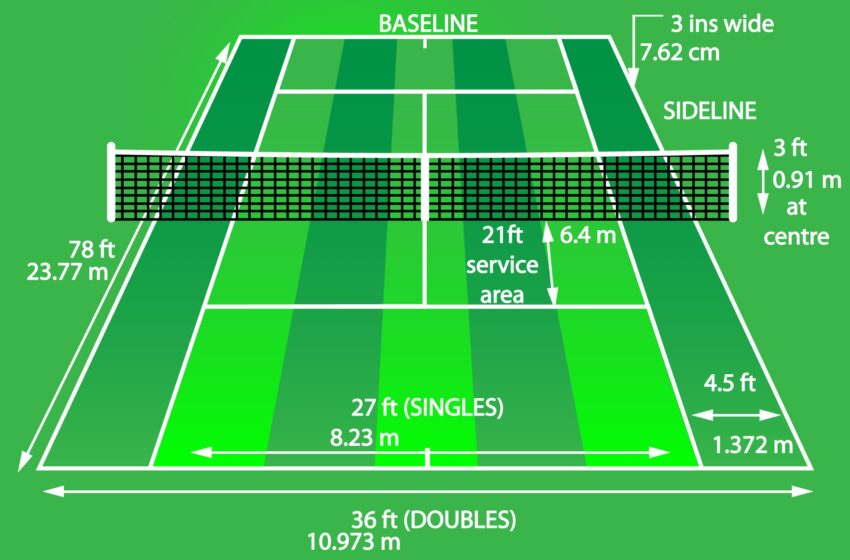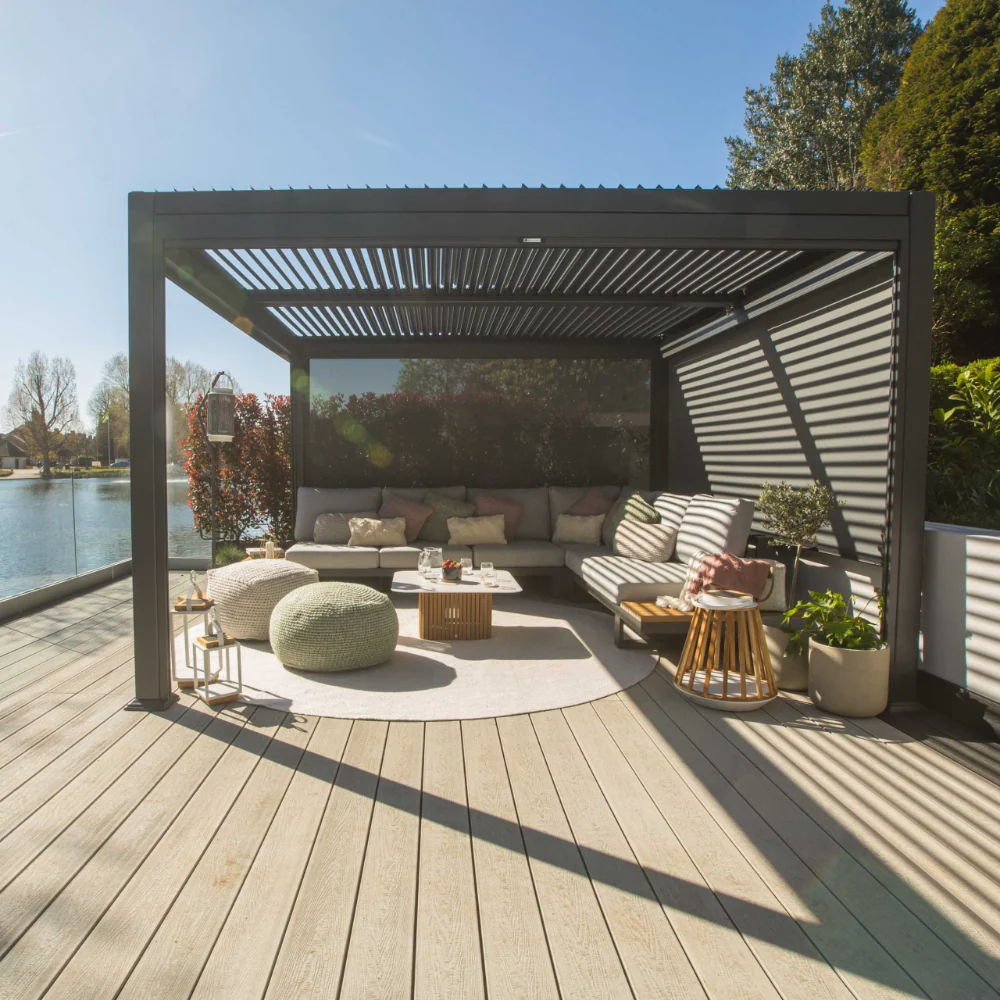The Universal Blueprint of a Tennis Court

Have you ever stopped to really look at a tennis court? Whether you’re watching a Grand Slam final on TV or walking past your local park, the court itself is a masterpiece of design. Its dimensions are a universal language, spoken from the public courts of Fremont Tennis Center to the historic grounds of Bitsy Grant Tennis Center. That familiar rectangle of white lines on a green or blue backdrop is more than just a playing field; it’s a carefully engineered space that dictates strategy, influences fitness, and ensures fairness at every level of the game.
Understanding its size isn’t just trivia. It’s the key to appreciating the athleticism on display, planning a new facility, or simply knowing what you’re getting into when you book a court for a match. Let’s break down the measurements that make tennis, well, tennis.
The Standard Dimensions: A Precise Rectangle
A standard tennis court for doubles play is a rectangle that measures 78 feet (23.77 meters) in length. Its width is 36 feet (10.97 meters). These figures are non-negotiable; they are the bedrock of the sport, standardized by the International Tennis Federation (ITF). This consistency is crucial. It means a player training at a facility like Eastside Tennis Center faces the exact same spatial challenges as a professional playing at Wimbledon.
The court is divided exactly in half by a net, which stands 3 feet (0.914 meters) high at the center. The net is held down by a strap to ensure it sags slightly, and it’s anchored to two posts that stand 3 feet (0.914 meters) outside the doubles court on each side, making the total width needed for a full court with net posts 42 feet.
But within this standard rectangle, there are different layers of lines that create the zones for different types of play.
Singles vs. Doubles: The Lines Tell the Story
This is where it gets interesting. If you look closely, you’ll see two sets of lines running the length of the court.
-
The Doubles Court: Uses the full 36-foot width. The outer two lines are called the doubles sidelines.
-
The Singles Court: Is narrower. The singles sidelines are the two lines inside the doubles sidelines. The width of a singles court is 27 feet (8.23 meters). The net posts are still outside this area, so for singles matches, the net is 3 feet high at the center but extends beyond the singles sidelines to the posts.
The baselines at the back of the court and the service boxes at the front are the same for both singles and doubles. This dual-line system allows for a seamless transition between the two versions of the game on the same surface.
The Service Boxes: Where Points Begin
Arguably the most strategic part of the court, the service boxes are where every point starts. Each side of the court has two service boxes—the deuce court and the ad court.
They are created by the service line, which runs parallel to the net and is located 21 feet (6.40 meters) from it. The center service line, running from the middle of the service line to the net, divides this space into two equal boxes. Each service box is 21 feet deep and 13.5 feet (4.115 meters) wide. Hitting a serve into this box is the first and most critical task of any rally. The precision required here sets the tone for the entire point.
The Clearance Space: The Unseen Essential
The court itself is just the beginning. To play safely and properly, a significant amount of clearance space around the court is required. The ITF recommends a minimum backspace (behind each baseline) of 21 feet (6.4 meters) and a minimum sidespace (outside the doubles sidelines) of 12 feet (3.66 meters). This gives players room to run for wide shots or chase down lobs without crashing into a fence or wall.
For professional tournaments, this clearance is even larger. This “run-off” area is a critical safety feature and a key consideration for any facility, from a new tennis training Berlin project to a community park. It also affects the overall footprint needed to build a court, which is much larger than the 78ft x 36ft playing surface.
Why Size Matters: The Impact on the Game
You might wonder why these specific measurements matter so much. The answer lies in the nature of the game itself.
The 78-foot length creates a perfect balance between offensive power and defensive possibility. It’s long enough to allow for passing shots and defensive retrieves but short enough that a powerful shot can still be a winner. The width creates angles that reward precision and strategy. The size of the service box demands immense accuracy from servers, making aces a skill rather than a guarantee.
This standardized size also directly influences the physical nature of the sport. The distance players cover explains the incredible cardiovascular fitness required. It also contextualizes the often-asked question, how long is a tennis match? Without a clock, match length is determined by games and sets. A best-of-three-set match can be over in 90 minutes or stretch beyond three hours. The number of rounds in tennis is actually referred to as sets, and a standard match is often the best of three sets for women and most ATP events, or best of five for men in Grand Slams. The duration of a tennis game itself can vary wildly, from a quick four-point sequence to a marathon deuce battle that lasts longer than some entire sets.
The court’s size even influences equipment. The term weight tennis isn’t common, but it hints at the importance of racket weight and swing mechanics needed to propel the ball effectively across this large space. A heavier racket can generate more power, which is essential for covering the court’s dimensions.
More Than Just Lines: Maintenance and Environment
Maintaining this precise playing field is a science of its own. Proper tennis sanitation, which includes regular cleaning of the surface, net, and surrounding areas, is vital for player safety and the longevity of the court. It prevents the buildup of dirt and algae that can make surfaces slippery. A well-maintained court is a safe court.
The dimensions may be fixed, but the surrounding environment is not. The same-sized court can feel vastly different under a blistering sun, in an indoor hall with fluorescent lights, or with a brisk wind affecting ball flight. Players must adapt their tactics to these conditions while still respecting the immutable boundaries of the court.
A Court for Everyone
From the iconic blue courts of the US Open to the red clay of Roland Garros, the green grass of Wimbledon, or the hard courts at your local park, the one constant is the size. That 78-foot by 36-foot rectangle is the great equalizer. It’s what allows a weekend player to dream of hitting a shot just like the pros. It’s a testament to the perfect design of the game. A design that challenges athletes, rewards strategy, and provides a consistent stage for competition at every level. So next time you see a court, you’ll see more than just lines; you’ll see the blueprint of a global sport.


